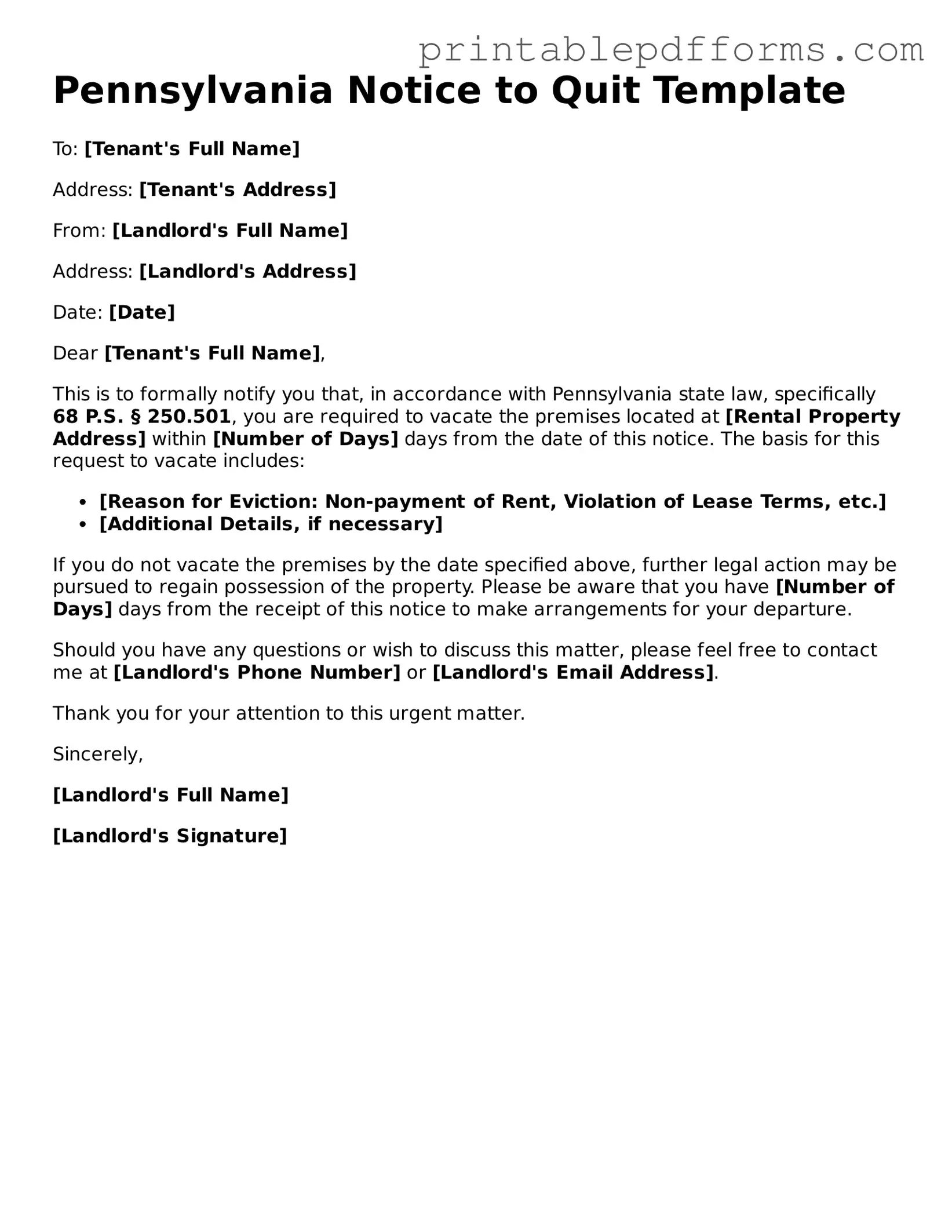Pennsylvania Notice to Quit Template
To: [Tenant's Full Name]
Address: [Tenant's Address]
From: [Landlord's Full Name]
Address: [Landlord's Address]
Date: [Date]
Dear [Tenant's Full Name],
This is to formally notify you that, in accordance with Pennsylvania state law, specifically 68 P.S. § 250.501, you are required to vacate the premises located at [Rental Property Address] within [Number of Days] days from the date of this notice. The basis for this request to vacate includes:
- [Reason for Eviction: Non-payment of Rent, Violation of Lease Terms, etc.]
- [Additional Details, if necessary]
If you do not vacate the premises by the date specified above, further legal action may be pursued to regain possession of the property. Please be aware that you have [Number of Days] days from the receipt of this notice to make arrangements for your departure.
Should you have any questions or wish to discuss this matter, please feel free to contact me at [Landlord's Phone Number] or [Landlord's Email Address].
Thank you for your attention to this urgent matter.
Sincerely,
[Landlord's Full Name]
[Landlord's Signature]
